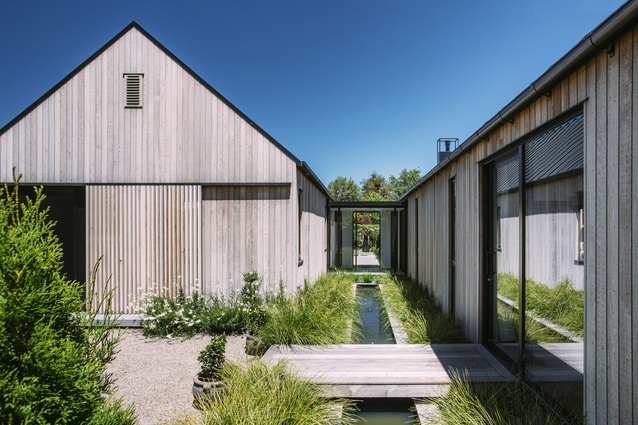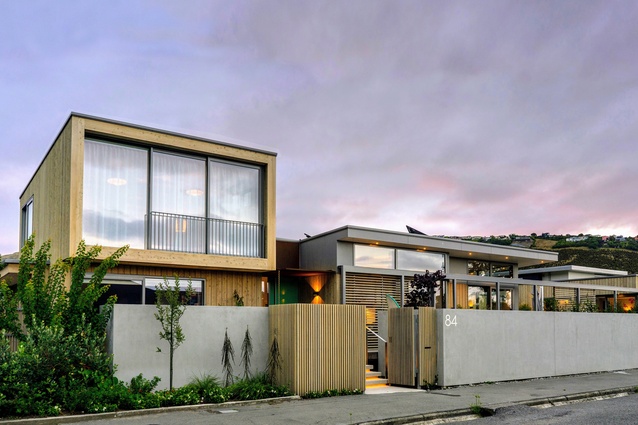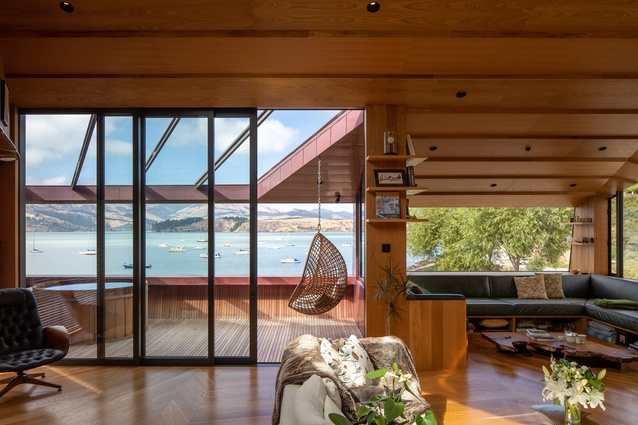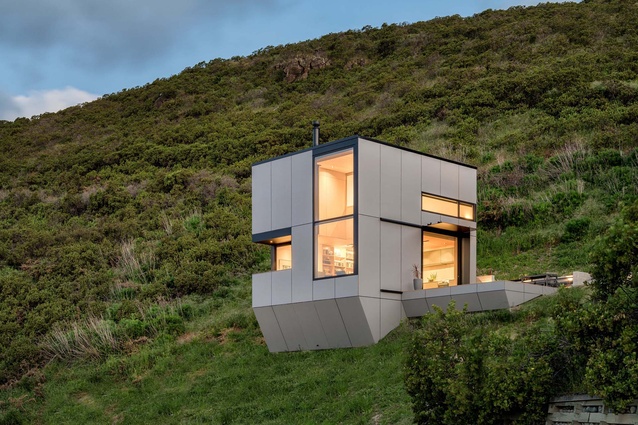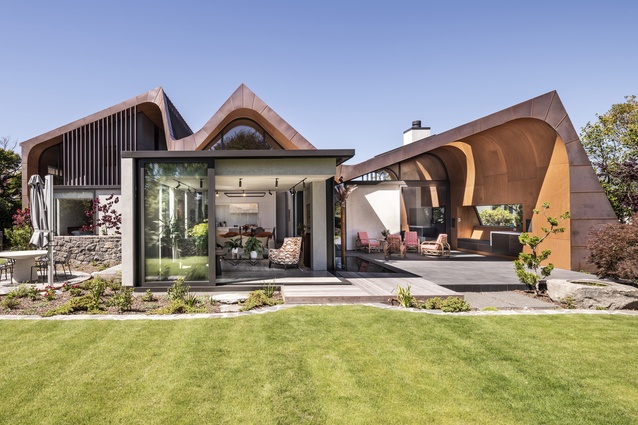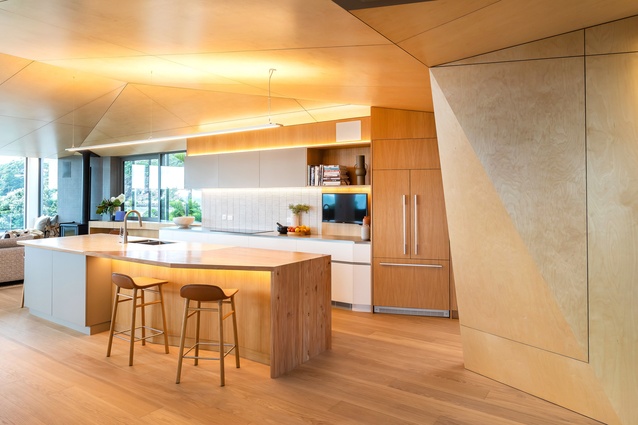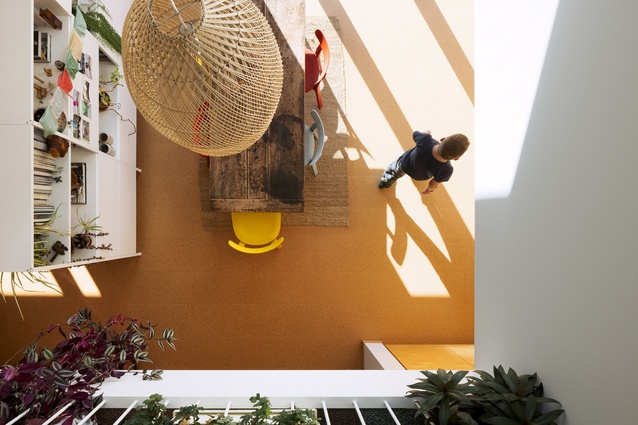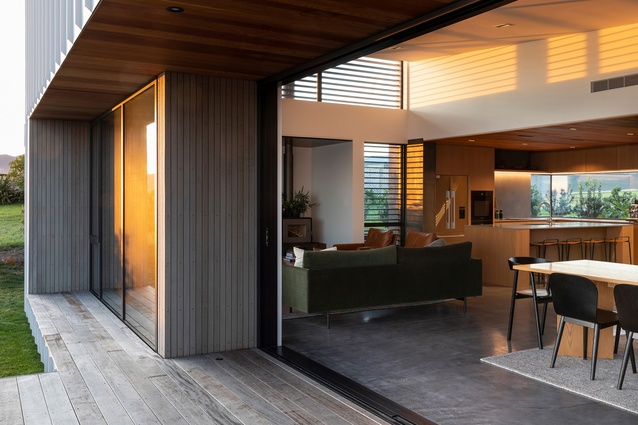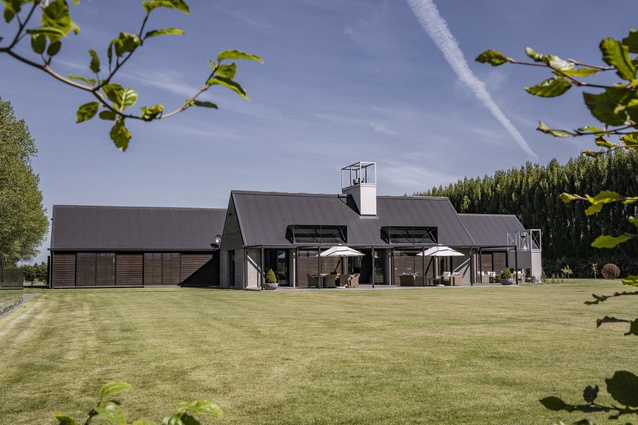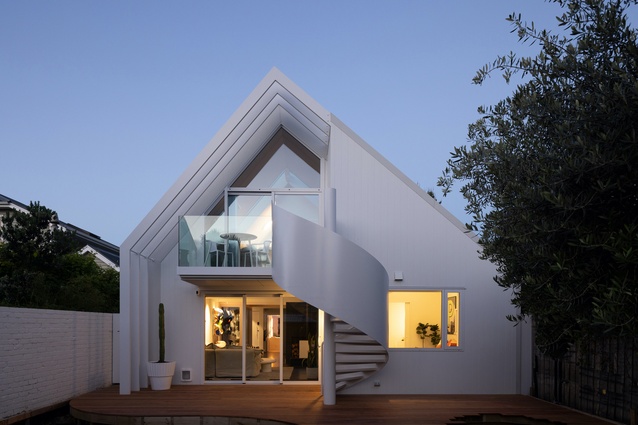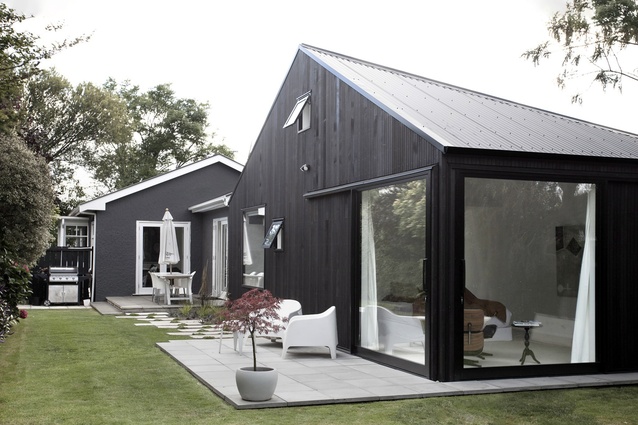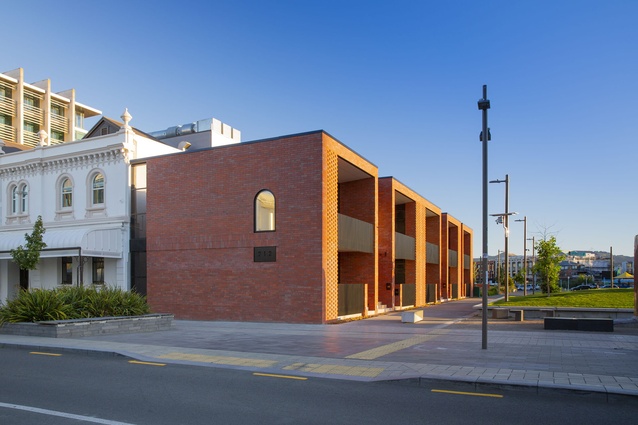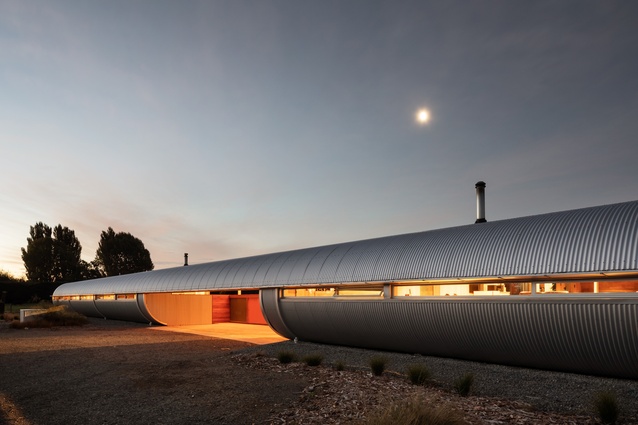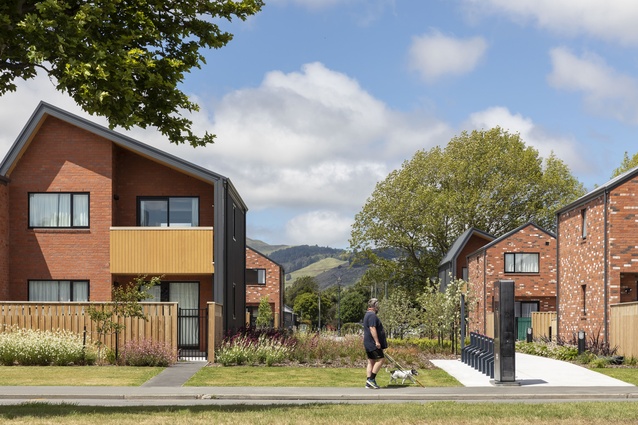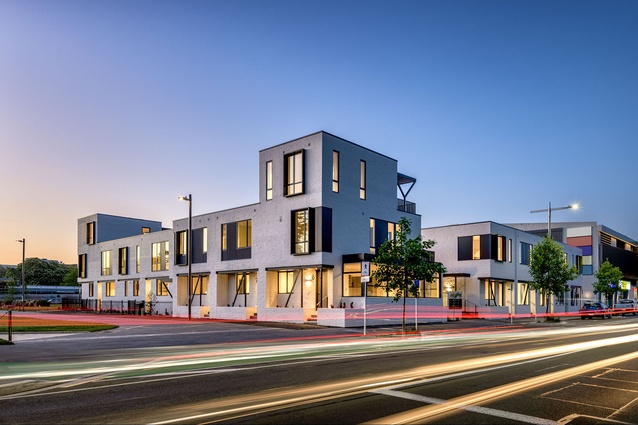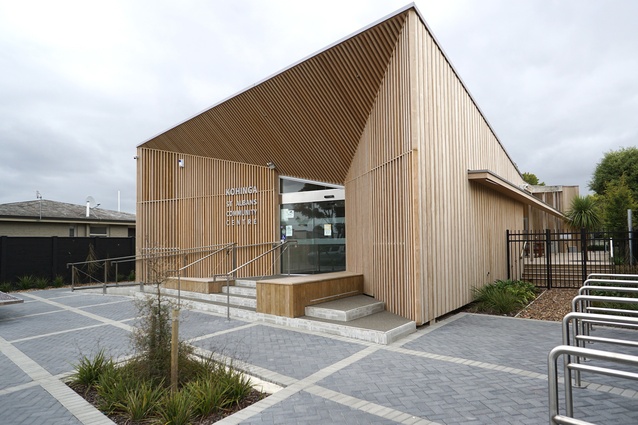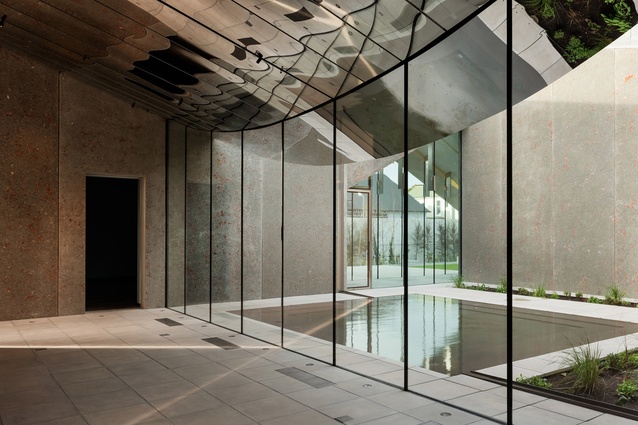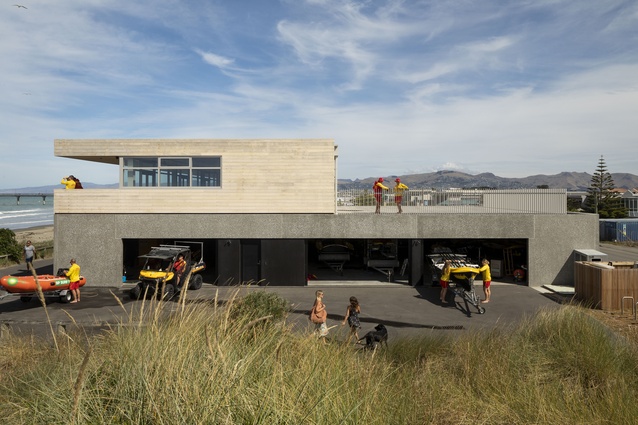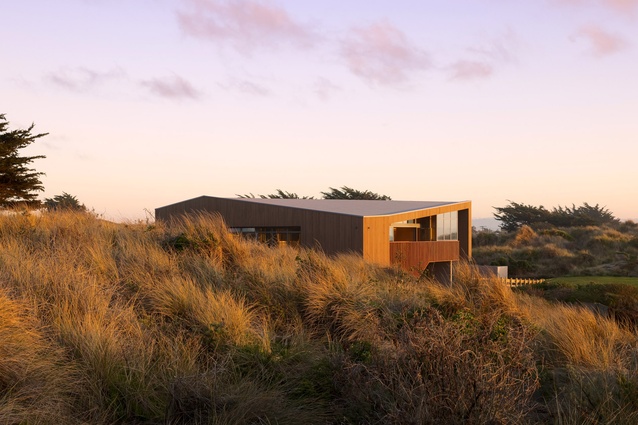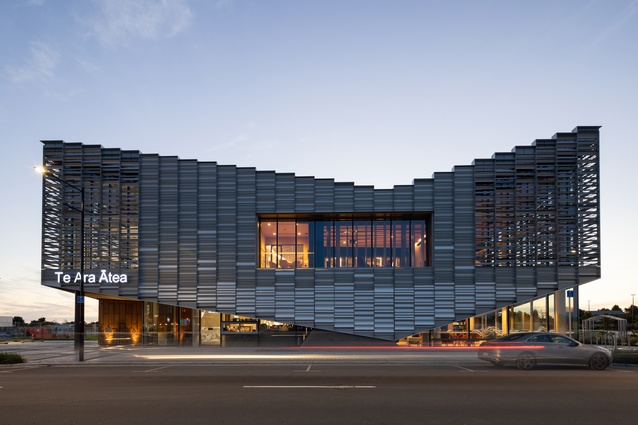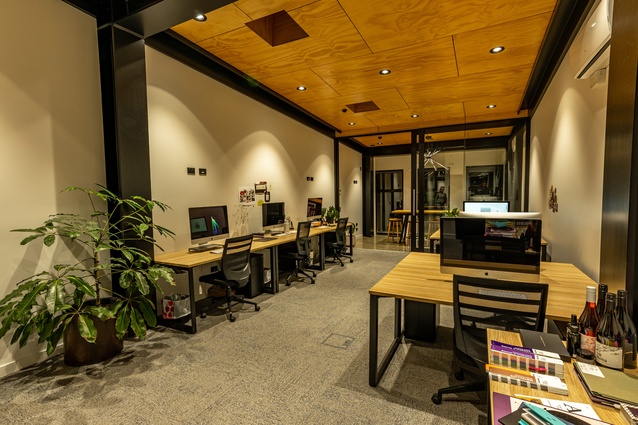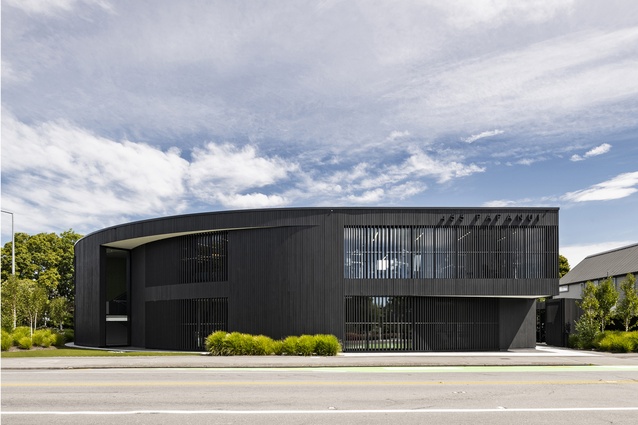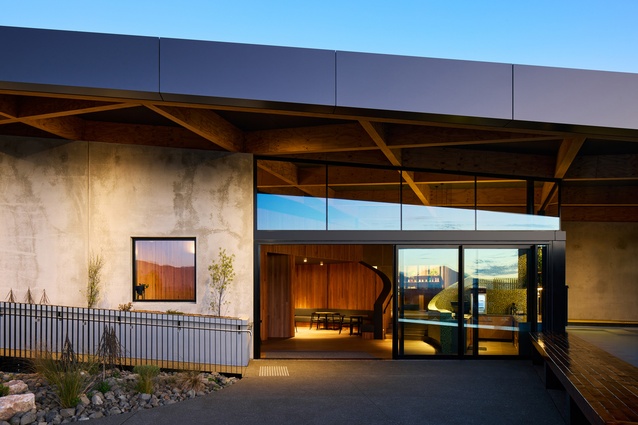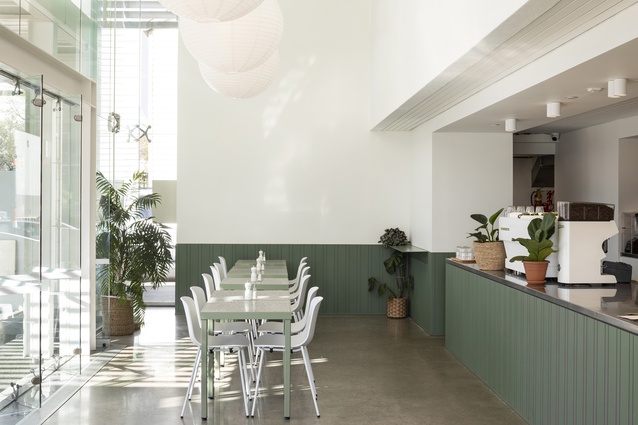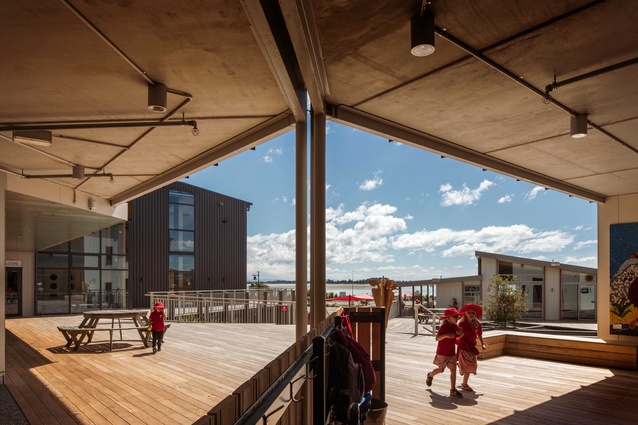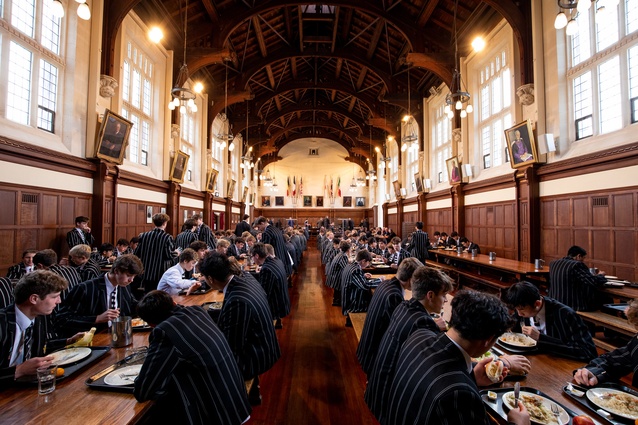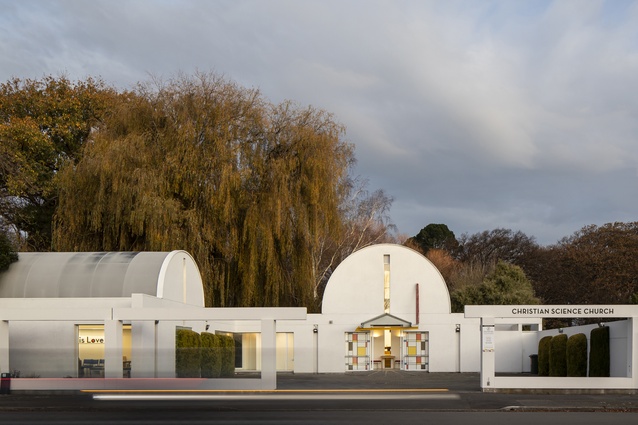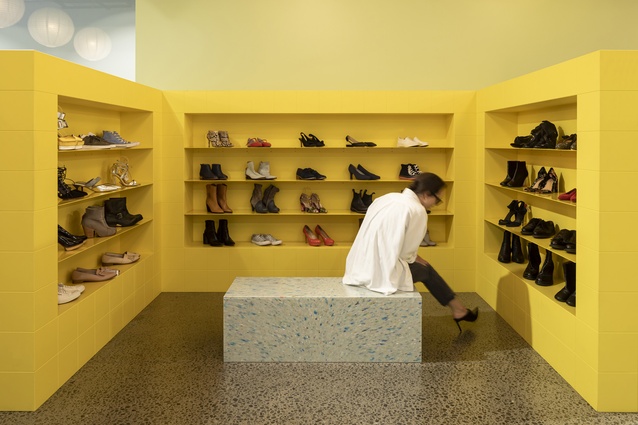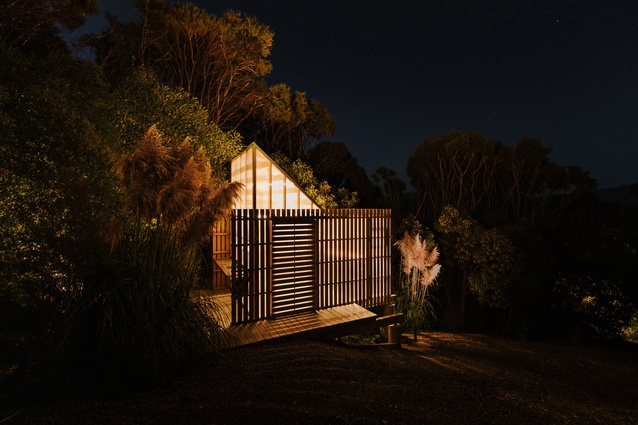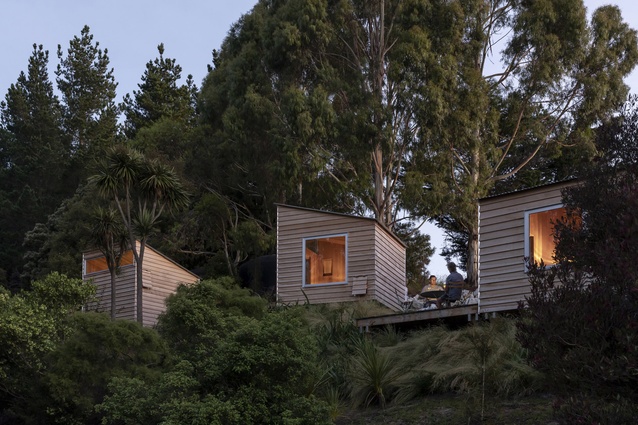Winners revealed: 2022 Canterbury Architecture Awards
Two community-minded surf clubs, a home for an extended family and a school have all taken out awards at a celebration of the region’s best architecture in Ōtautahi Christchurch.
Thirty Cantabrian buildings - both new and old - took home prestigious prizes at the peer-reviewed Te Kāhui Whaihanga New Zealand Institute of Architects Local Architecture Awards, held at the Christchurch Town Hall. Five winners also received Resene Colour Awards.
On the jury, convenor Jane Rooney of Architectus was joined by Jerome Buckwell of Crosson Architects, Jane Peddie of JHA, Tim Dewar of Athfield Architects and Danny Kamo of Kamo Marsh Landscape Architects.
Rooney said the judges were spoilt for choice with an abundance of projects to choose from.
“We were impressed with the creativity and commitment of architects, especially given the challenges presented by Covid over the past two years. Luckily, we were able to visit the short-listed projects in person and were able to experience how the spaces felt.”
The judges were also impressed with the level of community engagement and spirit evident in the projects that involved re-builds over 10-years since the earthquakes destroyed many inner city and regional buildings.
Housing
River House by AW Architects
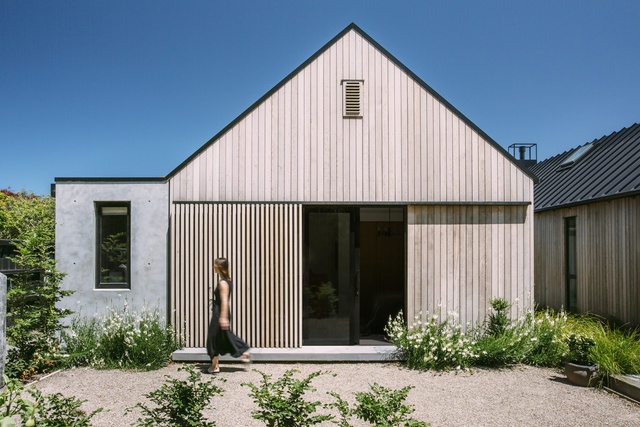
A private, rear section alongside the Wairarapa Stream provides a tranquil setting for this serene new home. Two offset gabled forms, joined by a glazed entranceway, create a connection to the stream environment to the west and a garden courtyard to the north, ensuring its owners have multiple options for entertaining, relaxing, and gardening. The natural cedar exterior complements the home’s riparian setting, while large, slatted sliders allow owners to close-off-from, or open-out-to their green surrounds at different times of day, or year. With a high standard of design detailing, material use and moments of surprise within, the architect has created a relaxing, calm and warm home for his clients to enjoy.
Four Winds by Borrmeister Architects
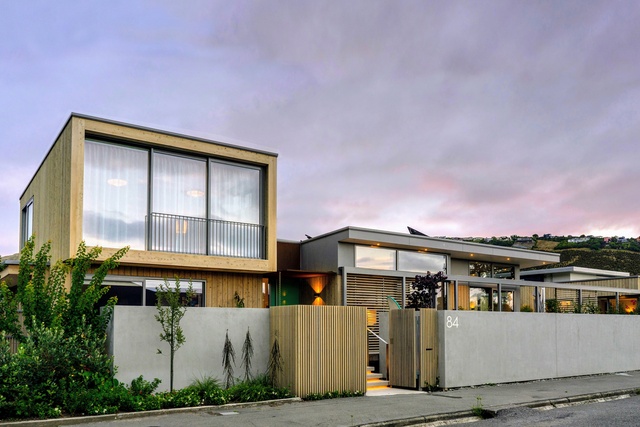
By centering the house around landscaped courtyards, a swimming pool and gardens, this seaside home blurs the transition between inside and out, maximising its coastal location and hillside surroundings. All-day sun, shelter from the prevailing winds and privacy are achieved through the clever use of levels, extensive glazing, generous rooflines and sliding timber screens. Well-proportioned interiors and a thoughtful floorplan provide a warm, light home, which responds to the clients’ lifestyle. Whitewashed macrocarpa cladding that reflects the beachside environment, and a vegetable garden that opens to the street, both ensure this new home sits comfortably within its residential neighbourhood.
Green Family Home by Bull O’Sullivan Architecture
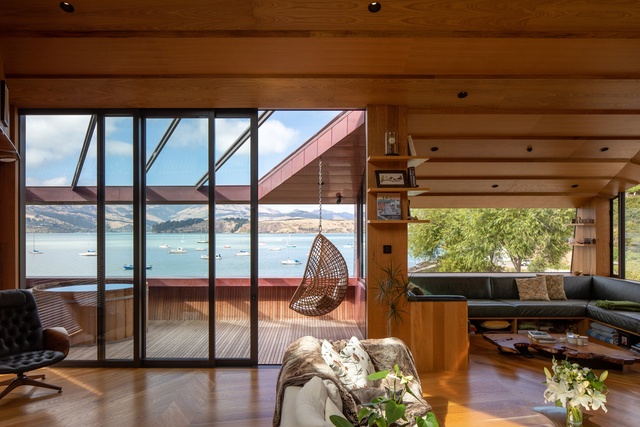
The sculptural form of this copper-clad home curls into its site, reflecting the topography of the volcanic Banks Peninsula, while its contoured roofline drops towards the water beyond. An intimate entranceway draws one into a voluminous, light-filled, open-plan living space that is warmed by the colours of its timber lining. The architects’ input extends to custom joinery and in-built furniture, evidencing the level of trust in their relationship with the clients. This successful collaboration between the architect, client and builder has resulted in a unique family home simultaneously practical, fun and with space for contemplation.
Te Rangi Pā - The Sky Fort, Stronsay Lane by Sheppard & Rout Architects
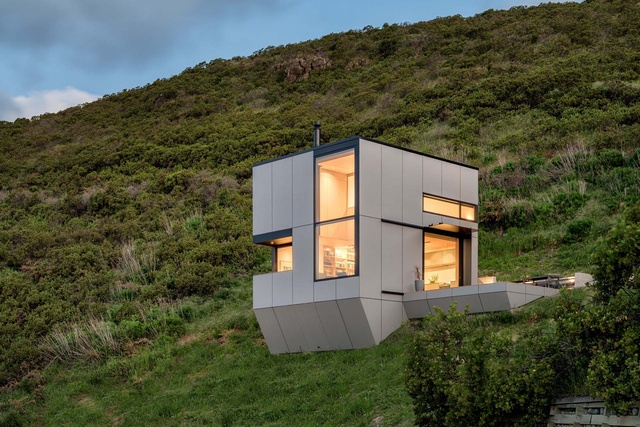
Located on a difficult, steep site and reminiscent of a bunker or military look-out tower, this small-footprint house is an exercise in space-efficient living and cost-effective materiality. With precise dimensioning of form, the architects created perfectly panelised external elevations. From its setting cradled by the Port Hills, views are gained of Christchurch’s lively industrial and residential areas. Internally both levels of the home are arranged around a double-height space with tall windows. The contrasting light tones of the plywood interior provide a welcome retreat.
Concrete Copper Home by South Architects
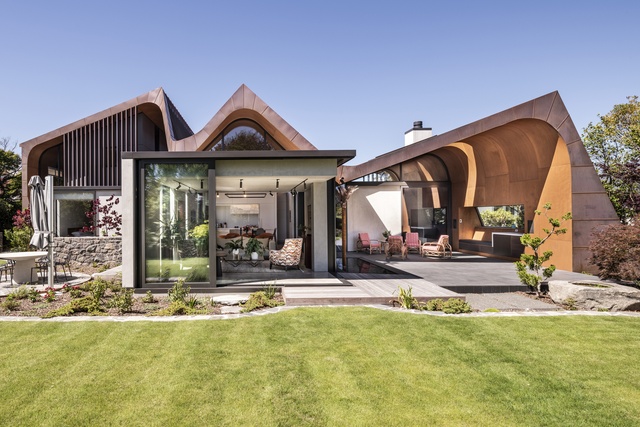
Spatially complex with an underlying rigour, the Concrete Copper Home is a masterclass in form, light, and surprise. Located on a suburban site in Christchurch with an outlook towards a stream, this home breaks architectural suburban ‘norms’ with its brave sculptural forms. The client wanted the home to be gezellig, a Dutch word that can describe a space as cosy and fun or signifies a general togetherness that gives a warm feeling. This house is gezellig, and much more, with its restrained palette of copper, timber, and concrete, all meticulously detailed. Concrete Copper Home maximises the site’s potential, shows that a sculptural form is possible in a suburban context, and positively impacts the wellbeing of its inhabitants and visitors alike.
Driftwood Home by South Architects
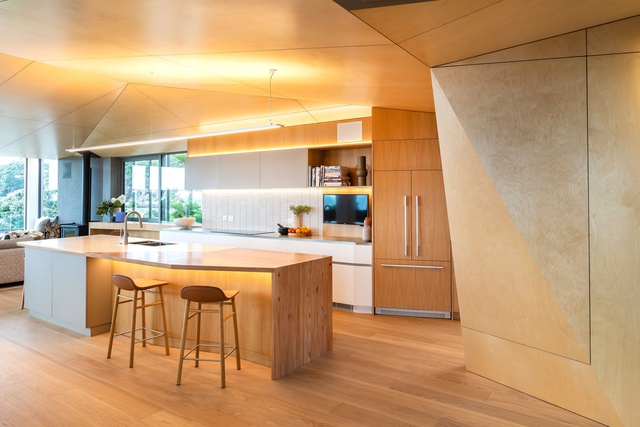
This well-crafted beachside home is a delightful addition to the Sumner Esplanade. The quirky forms and extensive material palette of the building’s exterior open to an interior full of surprising spatial richness and materiality. A rigorous briefing process has led to a carefully resolved floorplan that serves the clients’ needs well. Private, angled viewshafts set along the sides of the building deliver unexpected ocean vistas from rooms deep within the site. Immaculate craftsmanship, clever planning, and the inclusion of personalised stories within the design has resulted in a house that is closely aligned with its owners, and clearly a joy to occupy.
Wildwood by Three Sixty Architecture
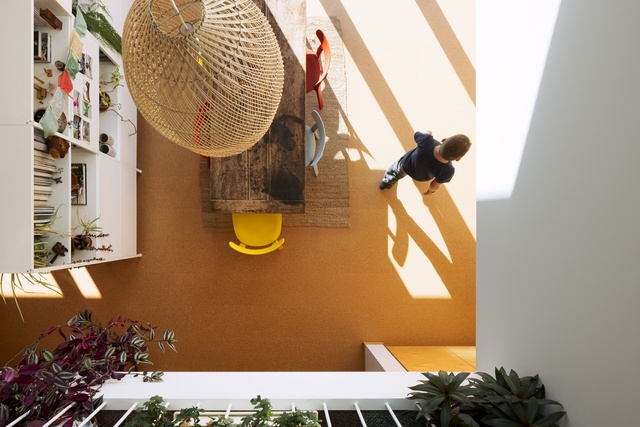
‘Reduce, reuse, recycle’ could well be the motto for this beautifully crafted and well-considered sustainable home. Demonstrating that bigger isn’t better, Wildwood caters for a growing family, while leaving as little impact on the planet as possible. Although going off-grid wasn’t a requirement of the brief, reducing the impact on resources both during construction and for the life of the building was. SIP panels provide an efficient structure and a warm, airtight envelope, while no concrete and a minimal amount of steel was used. A simple palette of materials makes this home feel warm and inviting, and a central void provides a focal point that plays with light and form, compression and release. Wildwood is a beautiful example of how a home can provide delight to its occupants and be kind to the planet.
Resene Colour Award winner
A clever and playful use of colour complements the architectural form and reflects the clients’ sensibilities.
Whitecaps House by Three Sixty Architecture
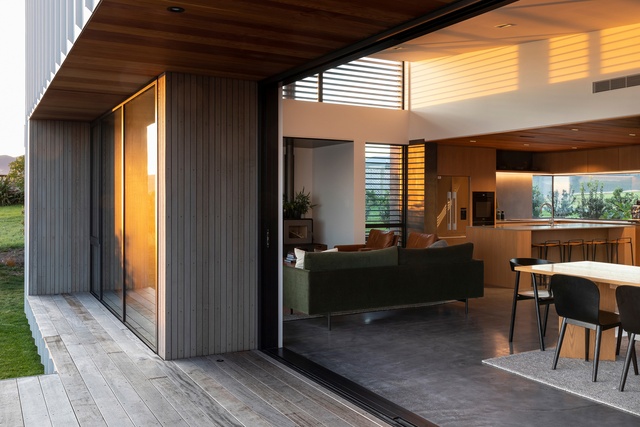
Perched on the cliffs of the small fishing community of Motunau, North Canterbury, Whitecaps House is a beautifully crafted four-bedroom weekend retreat. The house maximises its site and takes advantage of its ocean views with unique vistas being created from all rooms. Gathered around a centralised courtyard, the plan allows for solar penetration from the north while maximising the panoramic views to the south. The materials are elegant and restrained, creating a stunning easy-care weekend home.
Hepburn’s Road House by Warren and Mahoney Architects
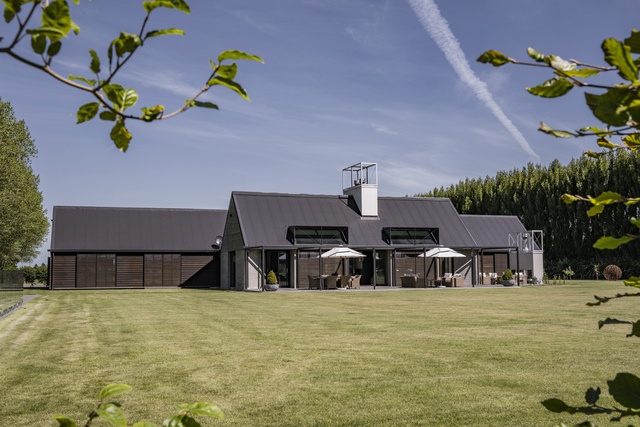
Located in a rural mid-Canterbury setting with views to Mt Somers and the foothills of the Southern Alps, this contemporary home of interconnected pavilions references the silhouette and detailing of Warren and Mahoney’s Christchurch houses of the 1960s and is a wholly appropriate response to its site. The traditional forms and the selection of materials that set up a hierarchy from supporting spaces in timber weatherboard to principal rooms in concrete, speak to the intended longevity that was part of the client brief. The restraint and careful attention to detail that has been exercised by the architect has resulted in a beautiful home that is rich in experience.
Housing – Alterations and Additions
Beach Barn by C Nott Architects
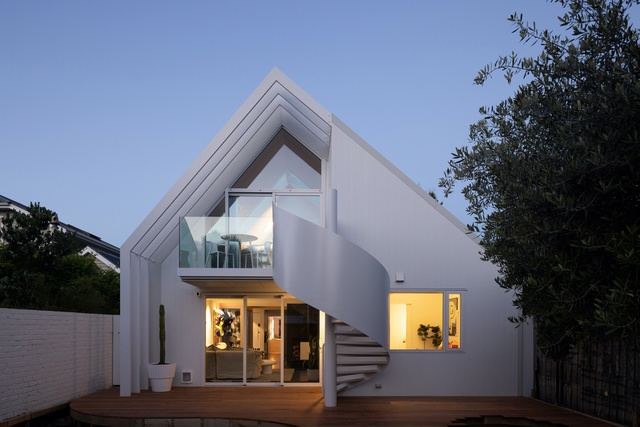
This extensive renovation maximises penetration of light and delivers clever functional spaces in this Sumner home. The original house, on a narrow waterfront site, was stripped back to its core and refreshed with the addition of huge skylights, clever and quirky inbuilt joinery, and beautifully crafted and curated finishes. The architect collaborated closely with the interior designer client, providing a crisp clean backdrop and form to support her flair for colour and pattern. The result is a joyful celebration of light and colour.
Resene Colour Award winner
Colour is used confidently and with exuberance, combining with crisp, white architectural elements to create a home with personality and flair.
Mullet House - Primary Bedroom Addition by Common
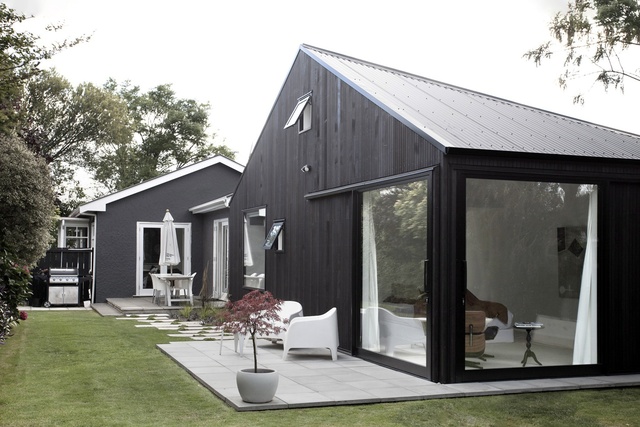
The ‘mullet’ addition brings the party to the back of this 1930’s St Albans bungalow. Standing behind the main house and connected with a transitional link, the new addition is unashamedly contemporary but respectfully complimentary. Creating a new bedroom & ensuite retreat for the owners, the mullet has greatly enhanced the liveability of the house and provides new connections to the garden. In an area where character homes and their established gardens are being removed for re-development at a rate of knots, this addition engages with the scale and form of the existing bungalow and is purposefully courteous to its neighbours.
Housing – Multi Unit
212 Cashel by AW Architects
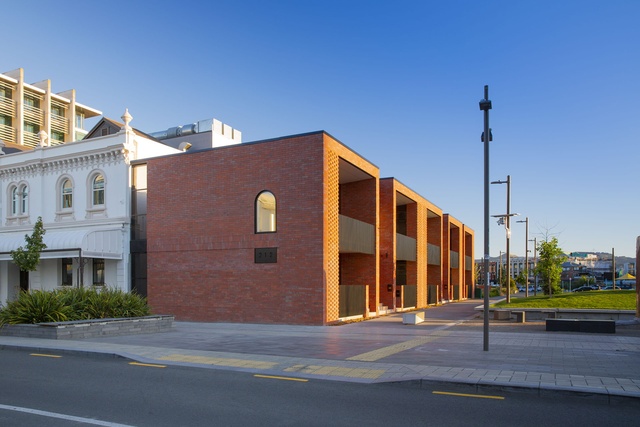
This addition to the Ōtākaro East Frame area of Christchurch CBD is a masterful display of multi-unit housing. Well resolved and deceptively simple forms come together to achieve a considered relationship to the adjacent heritage façade to the north, Rauora Park to the west, and an existing carpark building behind. Thoughtful spatial planning has achieved lofty, light-filled interiors, with services and storage components cleverly tucked out of view. Elegantly proportioned windows and refined brick detailing achieve an economical and robust outcome for this urban setting. AW Architects’ attention to detail, and thoughtful urban response, has delivered an exceptional contribution to the ongoing residential densification of Ōtautahi Christchurch.
Gustorob by Bull O’Sullivan Architecture
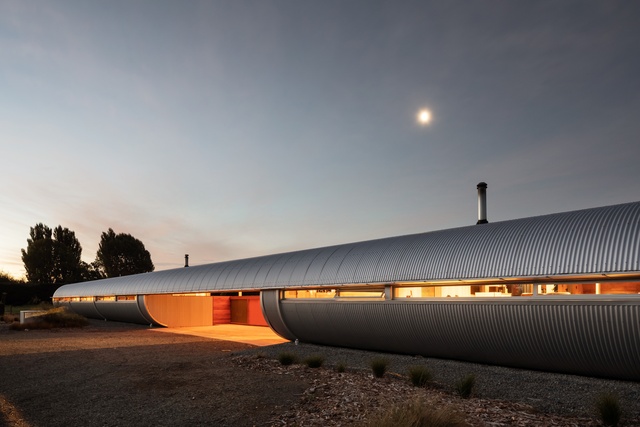
On a four-hectare lifestyle block between the Port Hills and Canterbury Plains, two detached dwellings are connected by a single roof. This canopy enhances the connectedness of the dwelling, in which three generations of a family share social interactions, loving memories, and support one another through different stages of life. The home’s geometric form, created by a curved back wall and sloping roof, generates a sensation of capture and gentle release. A striking external palette of rolled Zincalume fits Gustorob into its agricultural setting, while inside kauri, rimu and matai timbers exude a warm, golden glow. Orientated on a strict east – west axis, allowing for passive solar heating, Gustorob’s careful positioning on its site also takes advantage of an existing bisecting shelter belt.
Resene Colour Award winner
Colour has been used to add depth and enjoyment throughout the interior.
Ōtautahi Community Housing Trust - Social Housing by South by Southeast
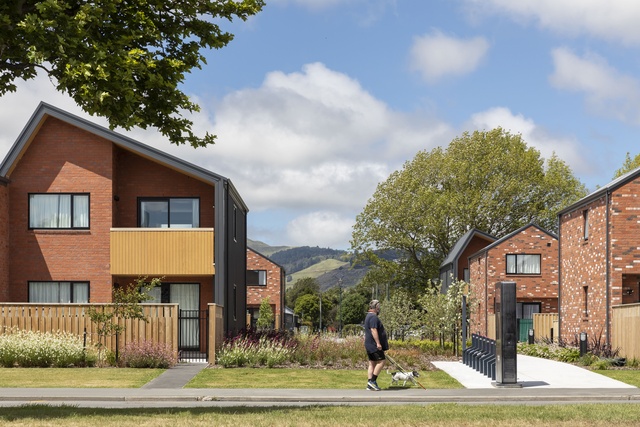
Replacing earthquake damaged council housing, this 90-home development cleverly balances site constraints, community needs and tenant privacy. The development consists of a range of one- to four-bedroom homes, set across the 1.6-hectare site in two storey groupings. Robust brick veneer and metal cladding is offset by soft and colourful landscaping, which connects courtyards, laneways, and carparks across a larger site circulation, in an open, park-like setting. Putting the needs of its tenants at its heart, positive social and environmentally sustainable outcomes of this project meet the principles of manaakitanga that guide the Trust’s work.
Riverbank Quarter by Stufkens + Chambers Architects
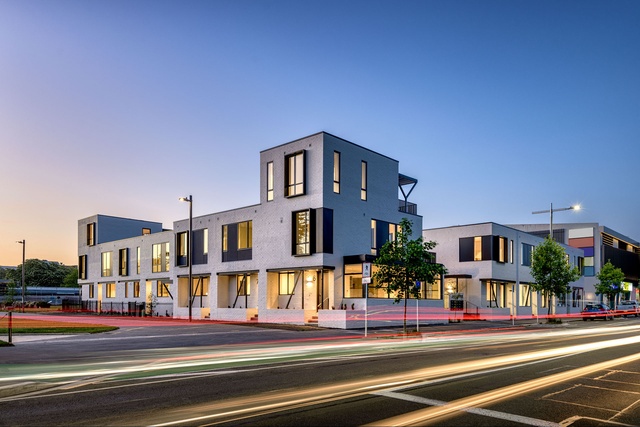
Fourteen two- and three-storey homes have been created as part of the Riverbank Quarter mixed-use development in Christchurch’s CBD. To achieve this exemplar of urban design, the architects employed principles of building form, elevation, orientation, massing, scale, articulation, and a mix or typologies and uses. The façade consists of ‘ad-hoc’ bricks, effectively placed to create a play of shadow and light at different times of the day, and outlooks from key living areas are varied and considered. The result is an elegant solution to urban-edge, mixed-use development.
Public Architecture
Kohinga St Albans Community Centre by Christchurch City Council

With a gently folded façade that draws visitors into its Colombo Street entrance, this much-loved community centre reinforces the Edgeware Village masterplan by further defining the cultural centre of the community. With the careful placement of multipurpose spaces, meeting rooms, kitchen and supporting spaces along the south side, the architects created an open and light filled east-west gallery. The scale and composition of the building shows a genuine consideration of the existing suburban streetscape yet allows it to portray its civic functions. Beauty and warmth are gained throughout from the exterior pinus radiata cladding, internal spruce glulam beams, and cross laminated timber walls, ceilings, and floors. The building is a net zero cradle to grave embodied energy building.
Ravenscar House by Patterson Associates
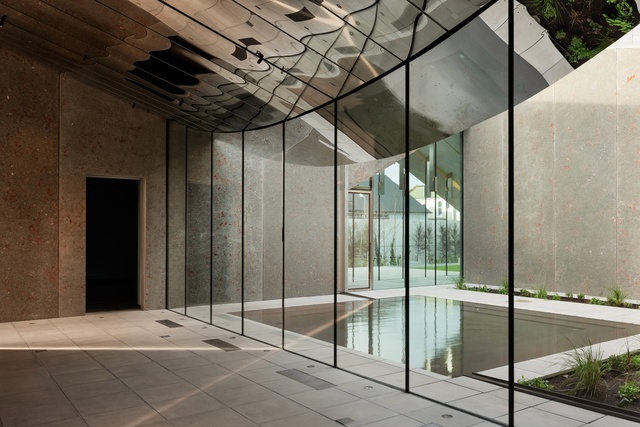
Patterson Associates have delivered an outstanding response to the generous vision of art collectors Jim and Dr Susan Wakefield. Bringing together a complex brief of art presentation, museological requirements, base isolation and carparking, this building exhibits exceptional craftsmanship and materiality throughout meticulously planned forms and spaces. Interwoven throughout is the story of the Wakefield’s earthquake damaged former home and art collection. Interior spaces reveal a sense of quiet and calm, leading the visitor through a series of curated ‘ghost rooms’ and exhibits. Volumes and areas of the original home provide the primary cues for a series of enclosed gallery spaces around a central courtyard, with glimpses to the surrounding gardens and the wider city beyond.
New Brighton Surf Lifesaving & Bathing Club by South by Southeast and Snøhetta in association
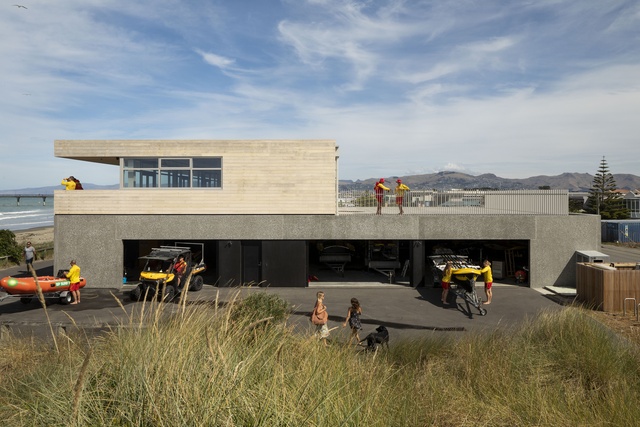
This new home for New Zealand’s oldest surf club provides modern facilities for the club and community while creating a sense of belonging and connection to the environment and local history. The challenges of the site location and tough environmental conditions have been embraced to craft a building with robust, durable materials. The building engages with the public on the seaward side by providing a seating platform sculpted from the stepped building edge. Sheltered outdoor spaces have been included on the western side to provide further spaces to be enjoyed by the club and community.
South Brighton Surf Life Saving Club Rebuild by Sheppard & Rout Architects
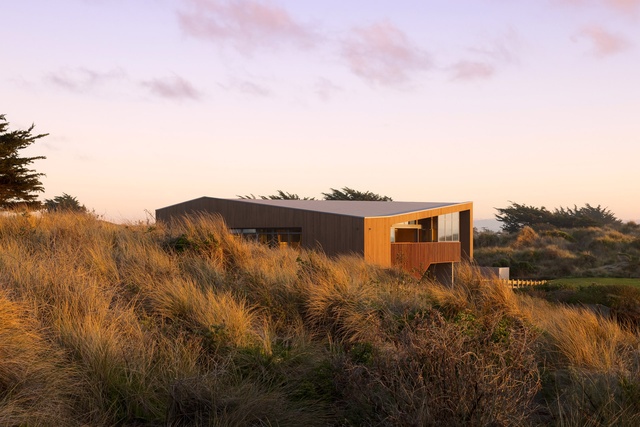
The new Surf Life Saving club sits on its original occupied site. Its angular roof line successfully connects with the sweeping form of the South Brighton sand dunes. The ground floor provides the practicalities of the surf club with storage, changing rooms, training spaces and vastly improved lifesaving access to the beach. The first floor provides a well-used community hub, sheltered balconies, club lounge and bar. The Patrol room is raised further to provide a clear view along the beach. Rendered concrete block and cedar and hardwood cladding are finished naturally providing visual harmony with the beach environment.
Te Ara Ātea by Warren and Mahoney Architects
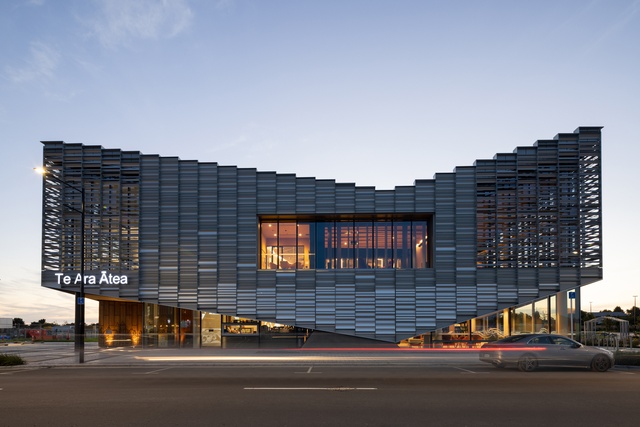
Te Ara Ātea is a new anchor building – a library, multipurpose community space, and performance facility – for the future Rolleston town centre. As the first building in a wider masterplan, it needed to sit confidently alone, and later integrate into a future context. The shimmering reflections created by the cladding reference the rippled surface of the braided rivers that are unique to the Canterbury Plains and hold cultural importance to mana whenua. Internally, warm timber and curved lines contrast with its rigorous exterior. Beautiful spaces and moments are carefully curated throughout the interior offering places to rest, work and ponder. Te Ara Ātea is a well-designed, well-considered building that will service the diverse and growing community of Rolleston now and into the future.
Commercial Architecture
Duncans 135 High by A E Architects
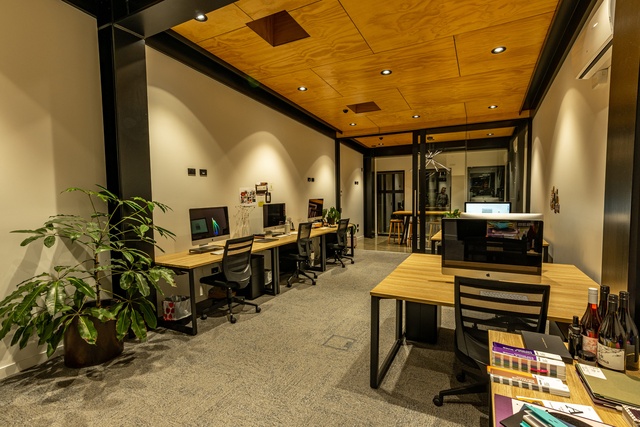
Set on a narrow 4.4 metre site, Duncans 135 High has one façade on High St and another on St Asaph St. Prior to the earthquakes, the site was one end of the Duncans Buildings: a row of sixteen two-storied heritage buildings that were constructed in 1905. Inside this new, three-storey build, the architects have created a rich range of spaces through compact and delightful internal planning. From outside, the High St façade cleverly blends with the adjacent two-storey Duncans Buildings that remain. This is achieved with thoughtful fenestration, and by using the weathered-steel trims and cornices that relate to the neighbouring buildings’ stonework. On the St Asaph St side, the building envelope hangs out over the footpath, echoing the temporary ‘Art Box’ gallery space opposite.
455 Papanui Road by MAP (2016)
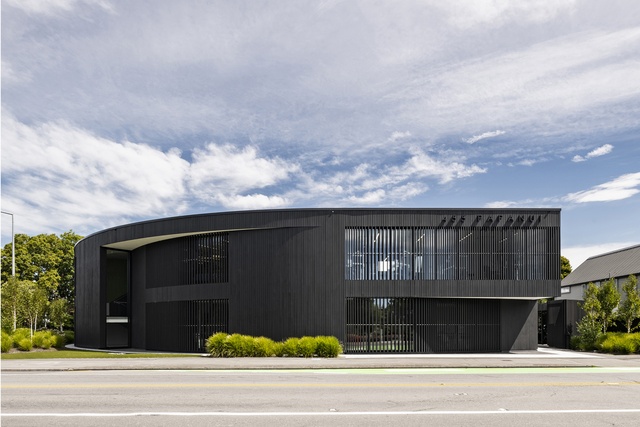
Positioned on a busy intersection in suburban Ōtautahi Christchurch, this distinctively curved black medical facility confidently anchors the street corner with its bold, dynamic presence. An external façade folds and wraps beautifully around the edges of the site, demonstrating that suburban commercial developments can successfully build to the street corner, with carparking tucked out of view around the back. From the street, intersecting curved forms and immaculately detailed timber slats offer glimpses through to the bright clinic spaces and circulation stairs inside. These sculptural qualities continue throughout the building’s colourful interior, creating a calm and welcoming experience.
Opuke Thermal Pools and Spa by Sheppard & Rout Architects
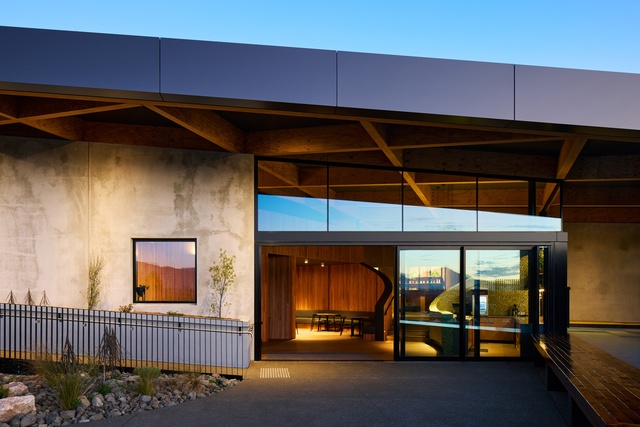
Designed with sustainability in mind, this complex near Methven and close to the base of Ōpuke (Mt Hutt), references a journey across the Canterbury Plains, through the nearby Rakaia Gorge and into the mountains beyond. The architects have cleverly illustrated this journey with material selections and architectural forms that reference ideas of protection, compression, and opening: a gabion walled entranceway leads one inside, where internally expressed roof grid of LVL beams float mountain-like above beech-clad interiors. From here, alternate pathways lead to family, adults-only, or exclusive luxury spa areas, making this facility a pleasure to explore and a positive addition to the area’s tourism market.
Hospitality
Doubles by Johnstone Callaghan Architects
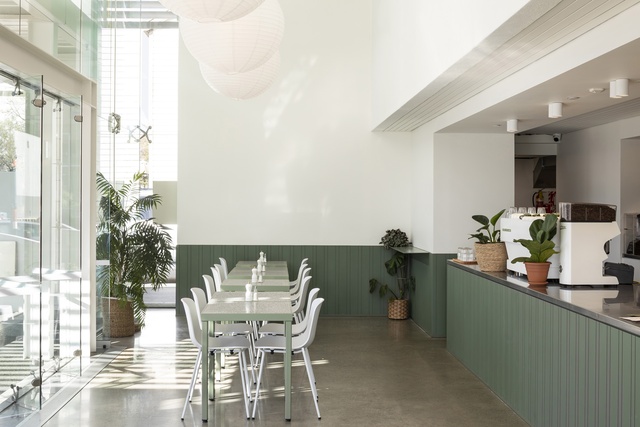
This clean, crisp fit out serves up a light, bright re-invigoration of a central city café. The architects’ collaboration with the client and graphic designers has resulted in clever use of colour and typography; subtle references to a well-resolved ‘doubles’ theme can be seen across the fit out, furniture, and branding. Prefabricated componentry, lush bursts of soft landscaping, and an expansion into the adjacent building lobby space make the most of this project’s small budget. The result is a bright and inviting eatery that confidently provides a welcoming retreat from the busy tourist trail of Worcester Boulevard.
Resene Colour Award winner
A clever, rigorous palette of curated green and white elements delivers crisp and well resolved punches of colour, elegantly accentuating the lofty white background.
Education
Te Raekura Redcliffs School by Tennent Brown Architect
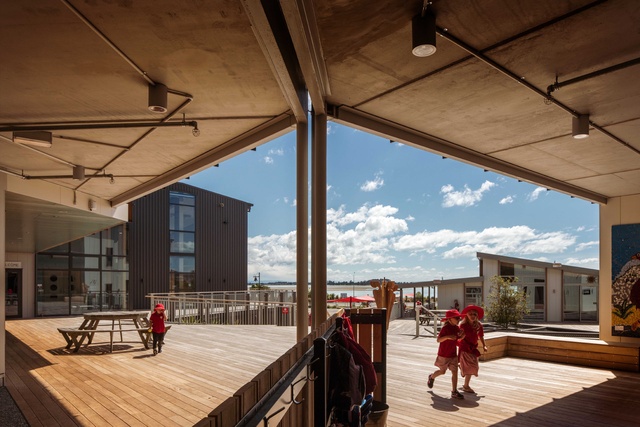
Conceived around the journey from Te Ihutai (the estuary) to Te Ana o Hineraki (Moa Bone Cave,) this expressive community of buildings references and connect the school to its unique site and history. This narrative was used to guide the selection of materials; volcanic-coloured precast panels face Te Raekura, while wharf-like timber structures face Te Ihutai. Diverse building forms and materials create distinctive spaces and a village-like feeling, while illustrating the development of tamariki through their years at the school. This narrative is further advanced through clever use of differing site levels to create beautiful and discrete spaces – both inside and out. With its low carbon timber structure, large photovoltaic array, natural ventilation, and diversity of outdoor spaces for shade and shelter, this is a school that is bound to inspire.
Enduring Architecture
Christ’s College - Memorial Dining Hall (1925) by Cecil Wood - Architect

The Dining Hall, built in 1925, is generally recognised as one of Ceil Wood’s finest works, although sadly it was never submitted for consideration of an NZIA Gold Medal award. Designed in the Collegiate Gothic Style and referencing the Great Hall at Christ Church in Oxford, the building expresses the spirit and traditions of Christ’s College and reflects the high-minded ideals of its founders. This wonderfully atmospheric hall has been a central gathering place for students for close to one hundred years and is still in use as a dining hall today.
First Church of Christ Scientist (1991) by Warren and Mahoney Architects
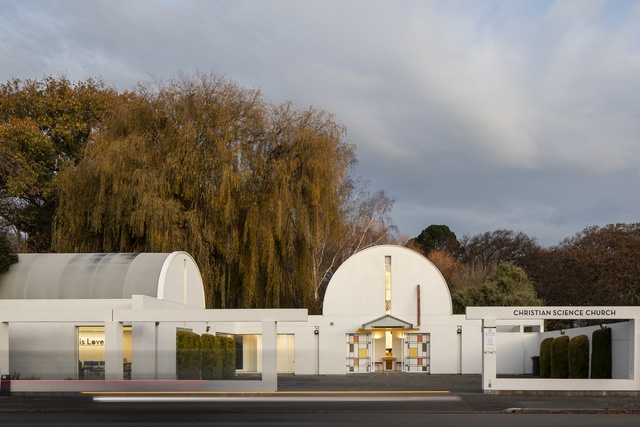
This unique example of postmodernism references both classical and modernist traditions. Occupying a picturesque riverside site with a wide courtyard facing onto Carlton Mill Rd, the compact building comprises two perpendicular rectangular forms, both topped with a barrel vault and a coffered ceiling, referencing the Pantheon in Rome. Elements of Mondrian’s works are also referred in the architecture, externally as singular elements and in the interior where a replica artwork covers the rear wall. This space of worship is both surprisingly playful and serene.
Interior Architecture
Recycle Boutique by Johnstone Callaghan Architects
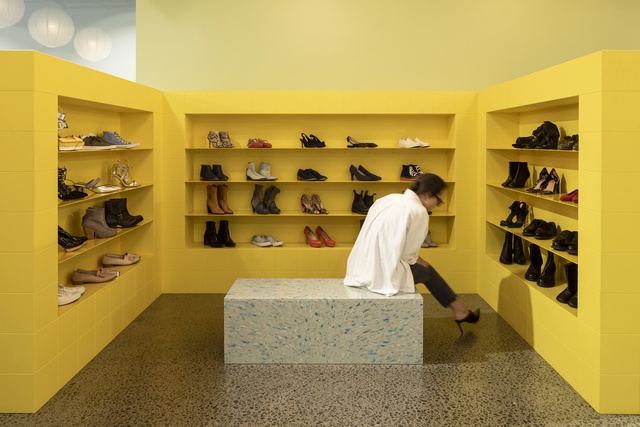
This exquisite space is inserted into an existing corridor off High St to create a new ‘playful and free’ space for the second-hand clothing retailer ‘Recycle Boutique’. The space becomes a metaphor for Recycle Boutique’s ethos, with items reused from a previous fit out and recycled plastic sheets creating display cabinets. An oversized central counter cleverly answers functional aspects of the brief and highly detailed use of simple, cost-effective materials elevates the industrial aesthetic into a sophisticated retail experience.
Resene Colour Award winner
Colour is used to create a structured space with youthful energy.
Small Project Architecture
Nightlight by Coll Architecture
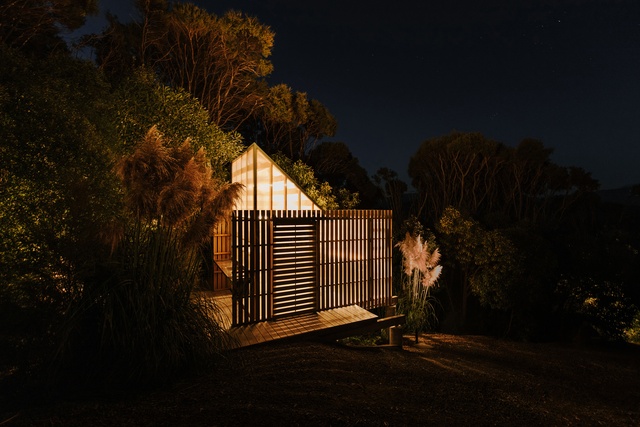
Nestled on the edge of a mature kānuka stand on the slopes above Akaroa, this 13 square metre project provides storage and services for the owners’ future home, to be built on the adjacent site. A polycarbonate shell with vertical modified pine slats reflects the Japanese shoji and illuminates adjacent trees. From outside there is no hint that the structure contains a workshop, kitchen, toilet and shower. Design detail, craftsmanship and a simple material palette enables this building to sit unobtrusively within this site, taking nothing away from its setting and views.
Russell’s Cabins by Johnstone Callaghan Architects
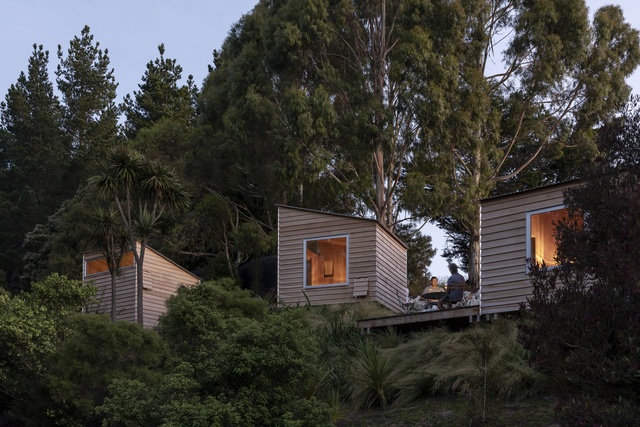
Located on an elevated site offering views across the Omihi vineyards, a series of three near-identical cabins, all less than 10 square metres, are cleverly positioned within existing vegetation to create privacy, external courtyard spaces and to frame unique views, despite their proximity to each other. To ensure a more efficient, cost-effective construction method, the cabins were constructed off-site, in the builder’s warehouse, and lifted into position to sit on timber platforms. Macrocarpa weatherboard exterior, eucalyptus interior and recycled wharf timber decks, along with the variation in elevations of the three huts, ensure the accommodation sits effortlessly within its surroundings.
The NZIA Local Architecture Awards 2022 programme is supported by Resene and APL.

